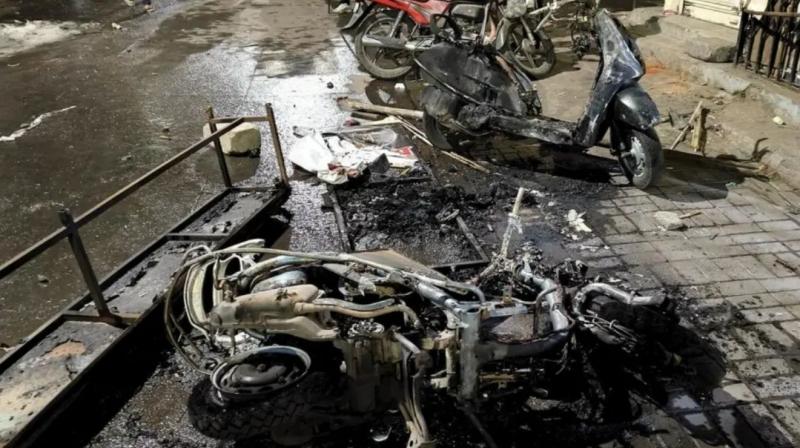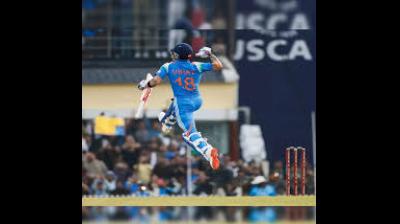
Hindutva organizations have been taking out processions for the past few days demanding the removal of Aurangzeb's tomb from Maharashtra.
Editorial: The communal riots that broke out in the Mahal area of ​​Nagpur (Maharashtra) and the political slander that has followed them are an unfortunate series. These riots started on March 17 with the burning of the mortal remains of Mughal Emperor Aurangzeb by a procession of Bajrang Dal and Vishwa Hindu Parishad activists.
Hindutva organizations have been taking out processions for the past few days demanding the removal of Aurangzeb's tomb from Maharashtra. A rumour spread about their action in Nagpur that the procession had burnt a copy of the Quran. On this, Muslim extremists also came on the streets and the clash between the two communities turned violent.
The police had to bear the brunt of the violence at the hands of the rioters. More than three dozen policemen, including four officers, were injured, about a dozen vehicles were burnt and the houses and business premises of political leaders and religious leaders were also targeted with arson and stone pelting. Although the administration brought the situation under control by imposing curfew within eight hours, the heat of the riots continues to hit Chief Minister Devendra Fadnavis' 'Mahayuti' government.
Its three allies - BJP, Shiv Sena (Shinde) and Nationalist Congress Party (NCP) - have not been united over the entire development. Efforts to take political advantage of this are being made vigorously by the opposition, especially Shiv Sena (Uddhav Thackeray) and Congress. Uddhav Thackeray and his son Aaditya Thackeray have said that Aurangzeb's tomb is three hundred years old.
For more than three centuries, Maharashtrians have been tolerating this. Why is its presence suddenly becoming unwelcome to a section of the Maharashtra population? Both the leaders claim that the Fadnavis government is fanning the issue of the tomb to divert people's attention from its own political and administrative failures and is bent on increasing communal divisions among the people of the state. A similar critical tone is also shared by the NCP (Sharad Pawar) and the Congress party.
In response to such criticism, Devendra Fadnavis has accused the riots of being instigated under a calculated conspiracy. He has also blamed the Hindi film 'Chhawa' (Bangladesh Tiger's Child) for creating anger against the tomb of Aurangzeb. Chhatrapati Shivaji Bhosale's eldest son and the second Maratha emperor Sambhaji Maharaj was brutally killed by Aurangzeb in 1689 during his campaign to conquer the south.
The film 'Chhawa' is based on the Marathi historical novel 'Chhawa' written by Shivaji Sawant about the life struggle of Sambhaji. This novel presents a one-sided storyline in which Aurangzeb is the villain and Sambhaji is the hero. Fadnavis's argument is correct in its place, but BJP activists have also been doing their part to fan the flames of emotions generated by the film for the past few days, as have leaders of other political parties.
In such an environment, the responsibility of keeping the socio-religious temperature normal fell on the Fadnavis government. It failed in this task. This gave strength to the communal forces.
Mughal Emperor Muhammad Mohiuddin Aurangzeb was a fanatic ruler; there are no two opinions about this. He was a cruel man by nature, as evidenced by the brutal murders of his three brothers (especially Dara Shikoh) and the imprisonment of his father Shah Jahan for more than eight years. He turned the majority of his empire against him by imposing ‘jizya’ on Hindus from 1678 and encouraging forced conversions.
These same steps became the main reason for the collapse of the Mughal Empire after his death in 1707. Despite such shortcomings, he was not an entirely dark character. He also had his strengths.
In the context of the Marathas or Sambhaji Maharaj, it does not seem inappropriate to mention that his son Sahuji, who later became the fifth Chhatrapati Maratha Emperor, remained in Aurangzeb’s custody for 18 years. He was never mistreated, but his noble upbringing and education were given great care.
After his release from detention in 1707 and his coronation as the Maratha Chhatrapati in 1708, Sahuji Pratham presented his faith by placing a green cloth on the tomb of Aurangzeb in Khuldadad (Ahmednagar).
Now those who are stirring up a movement to remove this tomb from Maharashtra have forgotten how much they are hurting the faith of Sahuji Maharaj, who ruled for 41 years and expanded the boundaries of the Maratha empire to the whole of Central India.













